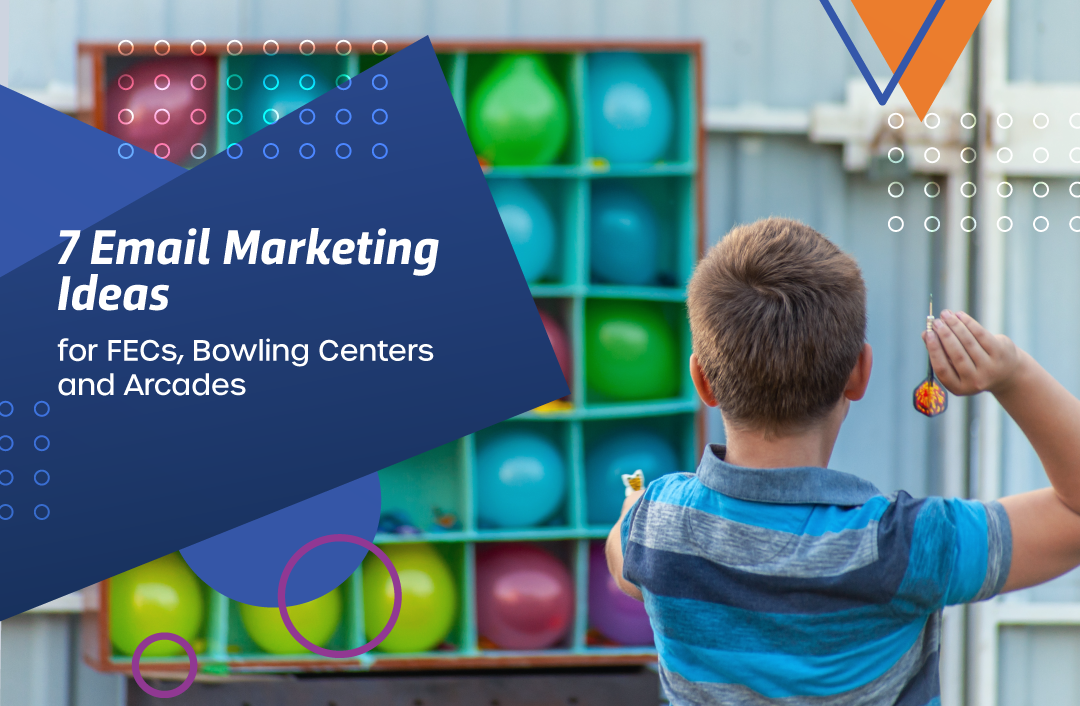Liability waivers are a must for trampoline parks and are becoming more common than ever in family entertainment centers.
New attractions like axe throwing are obvious places for waivers, but it’s also a good idea to use liability waivers in conjunction with VR attractions as well. If you’re considering a new attraction or are just looking to do a little freshening up of your facility’s safety or guest service practices this spring, now’s the time to review your waiver process to see if it’s providing the right experience for your guests and your staff.
1. Do I have the appropriate attractions flagged when a liability waiver is required?
You could decide to require liability waivers for every guest entering your facility or only when purchasing specific attractions. Ensure that you never miss a required waiver by configuring your tickets, passes or party package items to notify the team member to verify the waiver and attach it to a guest’s profile at the time of sale.
2. Does my waiver include everything it should?
More than just copying liability waiver text from an internet source, it’s important to carefully compose the right language for your waiver. According to Rand Wright, President of SafePark USA, if you haven’t had the language reviewed by your legal counsel, or within the last year, it’s a good idea to have it reviewed now, especially as your facility grows and as privacy laws continue to evolve. For instance, if you’ve added attractions that require liability waivers to your facility, is your current waiver specific to one attraction or general enough to include anything in your facility? Take the time to ensure that your waiver has all the right features.
3. Are my liability waiver expiration practices up to date?
In your business, consider the right expiration periods for liability waivers. For instance, would you prefer that liability waivers for adults never expire, expire annually or some other period of time? Have you updated your waiver system to reflect your preferred expiration policies? As always, be sure that you check for changes in the local legal requirements for your state or municipality.
In addition to that, check to see what kind of liability waiver expiration notification process you have on file. If a liability waiver is set to expire, are you sending guests an email inviting them to update it and come back for a return visit with a special offer? This can not only speed check-in at their next visit but can also give past guests the boost they need to return to your facility.
4. Does my check-in process meet my facility’s current need?
It’s always good to step back and assess your facility from a guest’s perspective and look for friction points. Are guests often confused about where to go if they’ve completed an online liability waiver and purchased an attraction ticket online? Are onsite liability waiver kiosks clearly marked so guests see where a first-timer needs to go first? Those little traffic flow issues can create big gaps in your guest experience.
Are liability waivers for family members linked in your facility management system so that you can save time and hassle selling tickets or passes and validating the waivers correctly and quickly? This will ensure that guests are through the line quickly so that they can get out and enjoy your facility and you can manage your lines with ease.
What about birthday party guests? Is checking in a birthday party seamless or stressful? If it’s stressful, consider ways that you could streamline it. For example, are you providing party parents with links to liability waivers inside their electronic invitations that they can send to party guests ahead of time? You’ll be able to use your RSVP list to confirm waivers against the guest list at check-in easily with a mobile POS station, saving critical minutes and boosting experience right from the start.
5. Are my attractions being maintained and operated at the highest level?
Rand says, “waivers are designed to accurately represent the risk to the participants and for the participant to acknowledge and accept the risk. They are not designed to absolve the facility from its reasonable responsibilities to keep their guests safe.” This means that your facility must ensure that you have top-notch safety checks and maintenance practices. In addition to maintenance schedules laid out by attraction manufacturers, it’s best to conduct daily safety checks on your own. This keeps attraction attendants sharp and on the lookout for potential risks. According former park operator and current CenterEdge Operations Manager, Aaron Horner, attractions attendants may need consistent encouragement to:
- Stay vigilant about checking safety pads in arenas or on trampoline courts to ensure they haven’t moved during guest play.
- Ensure that guest play areas and attractions are always clear of debris which can cause slipping or injury.
- Watch for any unsafe guest interactions, such as adults jumping too close to children on trampolines, or too much variance between guests in laser tag, dodge ball and other attractions which may result in accidents.
Further, while you’re refreshing maintenance schedules, it’s a good time to consider your guest interaction safety training. Take time out on the floor taking note of what team members are missing so that you can provide timely, meaningful training and then revisit this important training monthly. IAAPA has several resources available to members, including a self-assessment to keep your facility’s safety measures in check.
Your liability waiver process is a key component of your guest service and a way for you to operate a safe and financially healthy facility. Give it a good spring cleaning in any area and see an immediate return on investment – not only in experience but also in your own peace of mind.
Learn more about how CenterEdge Integrated Waivers can help you save time and hassle while keeping your business risks at a minimum. For questions about your risk, reach out to Rand at rand@safeparkusa.com.
Search Resources
Subscribe to Email Updates
Featured Resources
Blogs //
7 Email Marketing Ideas for FECs, Bowling Centers, and Arcades

Blogs //
5 Event Types that Can Win Big For Your FEC

News //
CenterEdge Welcomes John Keys as Sales Director

Blogs //
How to Protect Your FEC’s Brand

Posts by Topic
- Advantage Payments (7)
- Brand Management (19)
- Business Growth (81)
- Capacity Management (2)
- CenterEdge News (28)
- Client Interviews (8)
- Credit Card Processing (3)
- Data & Reporting (12)
- Digital Signage (1)
- Event Management (20)
- Facility Management (10)
- Food & Beverage (8)
- Guest Experience (34)
- Guest Management (20)
- Holiday Season & Promotions (5)
- Industry Events (10)
- Inventory Management (1)
- Loyalty Programs (8)
- Marketing Tips (24)
- Operations (1)
- Point of Sale (10)
- Product Launch (11)
- Productivity (5)
- Profitability (35)
- Redemption Management (1)
- Sales (35)
- Season Passes (1)
- Team Training (60)
- Waivers (2)

Leave a Comment